Gobi Desert & Central Tour 12 Days
- Size:1 to 15 PAX
- Moderate
- Duration:11nights/12days
Overview
We understand that you will journey a great distance to Mongolia to witness and engage in as much as you can. Consequently, ensure that this is the ideal Mongolian itinerary tailored for a seeker of cultural experiences, a nature enthusiast, an explorer of new destinations, an aficionado of busy schedules, and an active traveler such as yourself. By adhering to this tour itinerary, you will hike through the vibrant green mountain valleys of the Gobi Desert, ascend towering sand dunes for breathtaking views and the Gobi desert sunset, visit the famous paleontological excavation site, and uncover recent history while examining the deserted monastery. Nights in the Gobi Desert are serene and lovely, illuminated by countless glittering stars. In central Mongolia, you will journey through the World Cultural Heritage site Orkhon River Valley National Park to discover famous natural features and cultural relics. Two distinct nomadic family visits enable you to experience nomadic life firsthand and sample genuine Mongolian cuisine.
Date:
10 May-10 Oct
Includes:
- Night in a hotel
- Daily bottled water
- 10 nights in ger camp
- Van transfers
- Arrival airport transfer
- English speaking guide
- Horse & camel riding
- Entry fees to national parks and the museums
Excludes:
- Items of personal use
- International travel
- Alcoholic drinks & beverages
- Travel & medical insurance
- Visa fee
- Departure transfer
Tour price:
- Pax 2 $2800
- Pax 3 $2300
- Pax 4 $ 2100
- Group tour $1900
- Single supplement $450
Detailed Itinerary
Day 1: Arrive in Ulaanbaatar
Day 1: Arrive in Ulaanbaatar
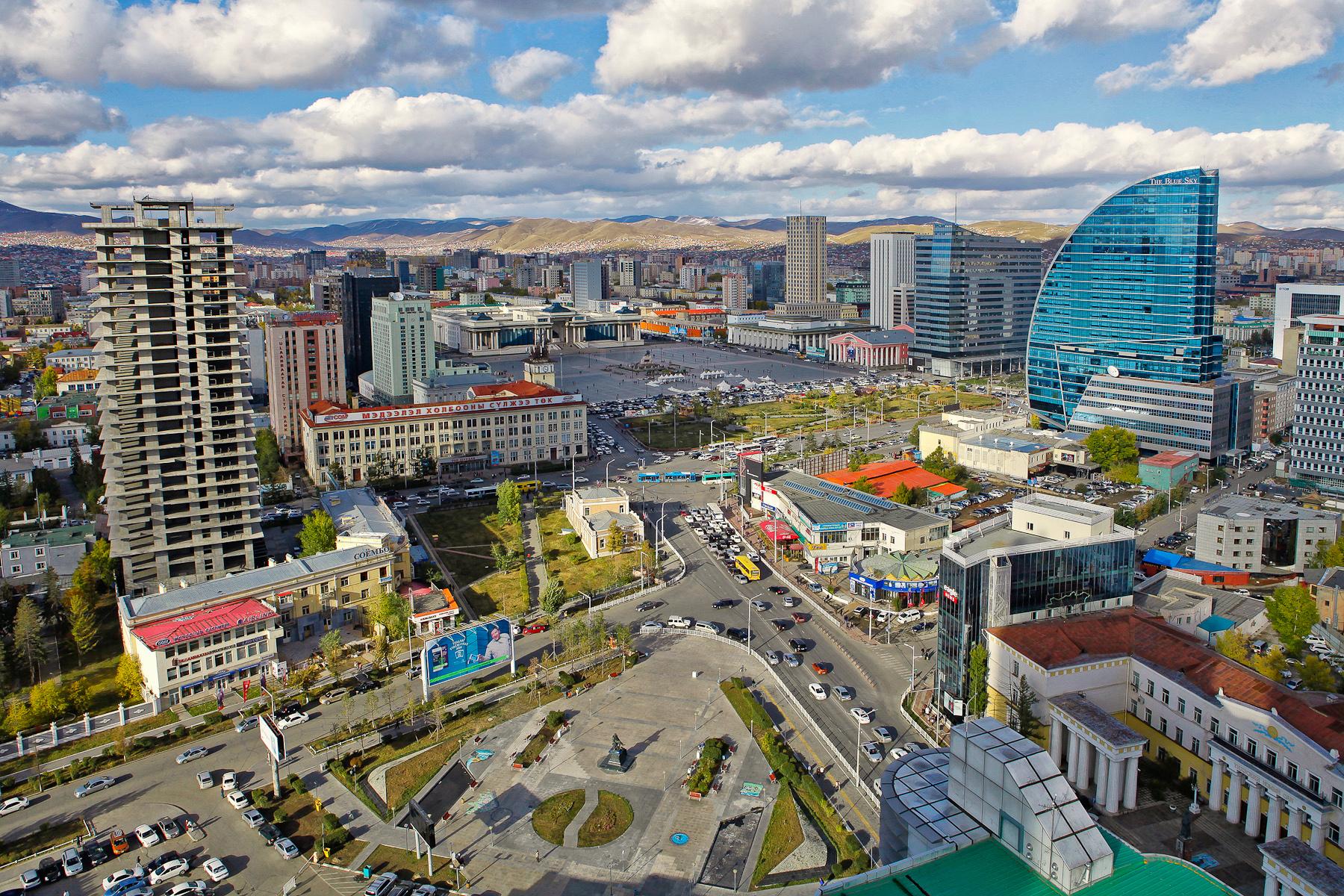
Your driver will meet you at the airport/railway station and take you to a hotel located in the city center. Leisure day to unwind and explore the city independently while residing in a well-located central hotel
Day 2: Vibrant mud cliffs in Tsagaan Suvarga
Day 2: Vibrant mud cliffs in Tsagaan Suvarga
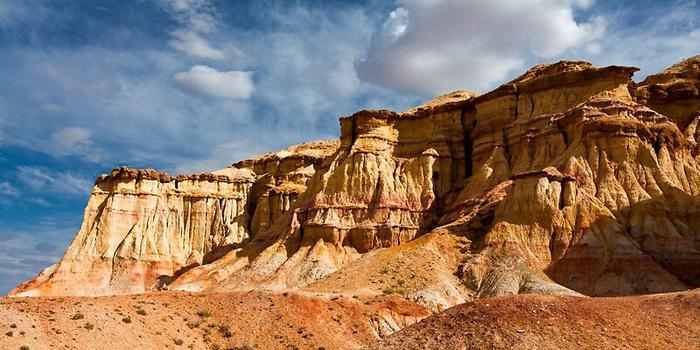
At 8:30 AM, your driver and guide will meet you at the hotel to begin the tour of the Tsagaan Suvarga cliffs in the Gobi desert. This region is a popular destination in the Gobi Desert, with all tourists eager to have their photos taken amid this vibrant natural structure. Trekking up and down the paths of the stupa-shaped vibrant cliffs takes 1 to 1.5 hours
Day 3: Gobi Gurban Saikhan Mountain National Park and trekking in Eagle Valley
Day 3: Gobi Gurban Saikhan Mountain National Park and trekking in Eagle Valley
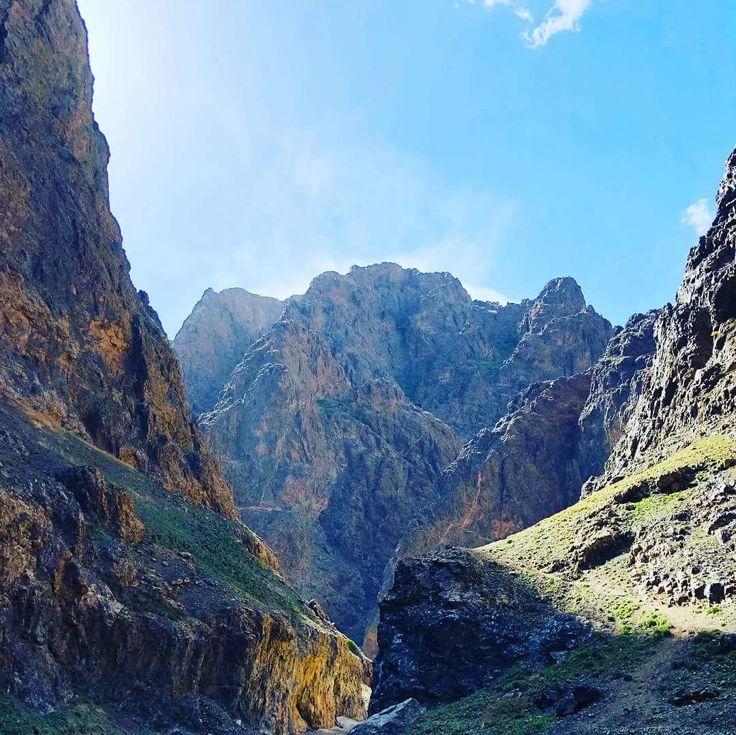
The Gobi Gurban Saikhan translates to "Three lovely mountains in the Gobi.” The Gobi Gurban Saikhan Mountain is an exquisite national park, teeming with wildlife and picturesque locations. One of the scenic valleys reachable by car is Yoliin Am/Bearded Eagle Valley. Once our vehicle takes us to a specific parking spot, we will traverse the magnificent valley into the heart of a steep rock canyon that receives no sunlight. Consequently, it remains icy until the end of June. The hike lasts for 2.5 to 3 hours for the journey into the valley and return to the car. The valley is home to Bearded Eagles, elusive wild sheep, and ibexes
Day 4: Khongor Sand Dunes & camel riding
Day 4: Khongor Sand Dunes & camel riding
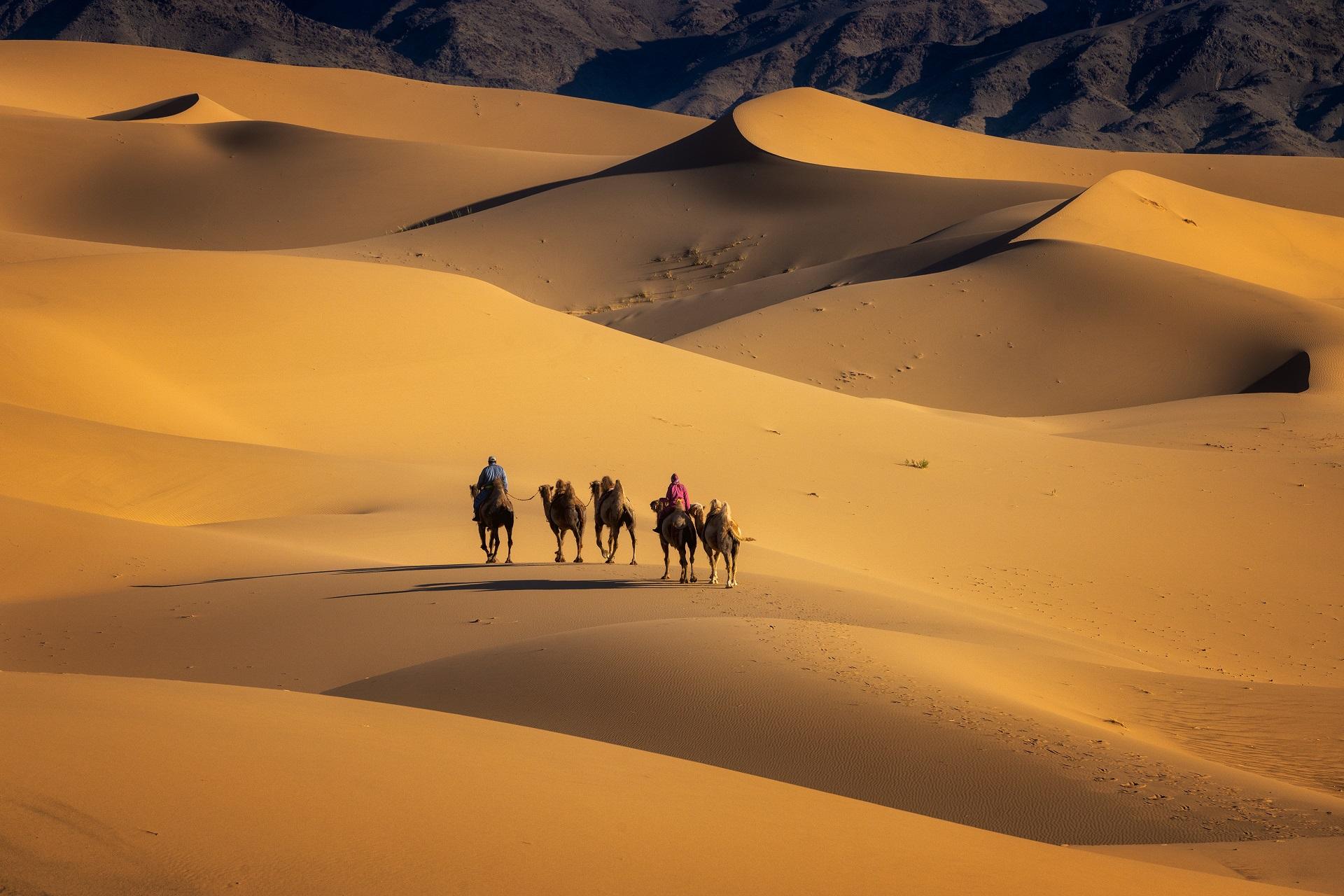
We will proceed to Khongor, located within the Gobi Gurban Saikhan National Park. Upon arriving at the sand dunes, you will trek beside the lush stream, ascend the sand dunes, meet a nomadic family, and enjoy an hour-long ride on two-humped camels. If you ascend one of the highest sand dunes, disperse the sand towards the north against the wind to discover why residents refer to the sand dunes as "Singing Sand.” The views and the sunset/sunrise are amazing from the summit of the sand dunes
Day 5: Drawings of Khavtsgait Rock and the Flaming Cliffs
Day 5: Drawings of Khavtsgait Rock and the Flaming Cliffs
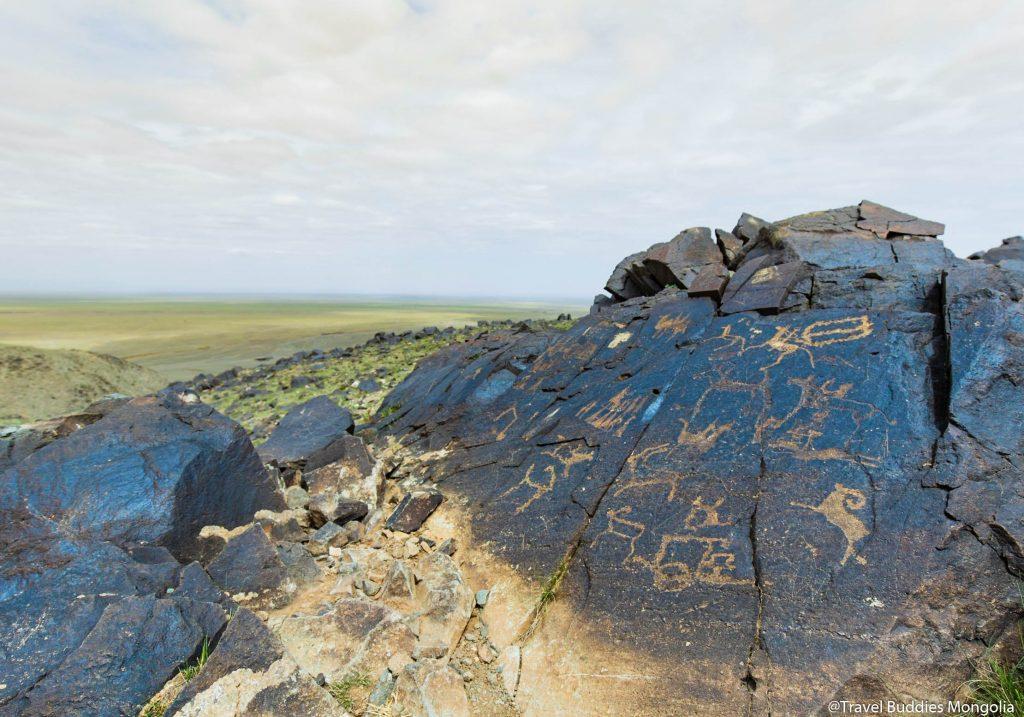
We will proceed on the northern side of the West Saikhan Mountain to investigate the Khavtsgait Rock carvings, originating from the late Bronze Age and early Iron Age. You will arrive at the Khavtsgait rock drawing after a 2 km gentle trek in both directions. Subsequently, the expedition proceeds to the Flaming Cliffs, where American adventurer Roy Chapman Andrews unearthed dinosaur remains, including the initial dinosaur eggs ever found on the planet. The cliffs are beautiful and camera-ready during sunset
Day 6: Driving to Ongi Monastery through the open steppes after visiting the Bayanzag Saxual tree grove
Day 6: Driving to Ongi Monastery through the open steppes after visiting the Bayanzag Saxual tree grove
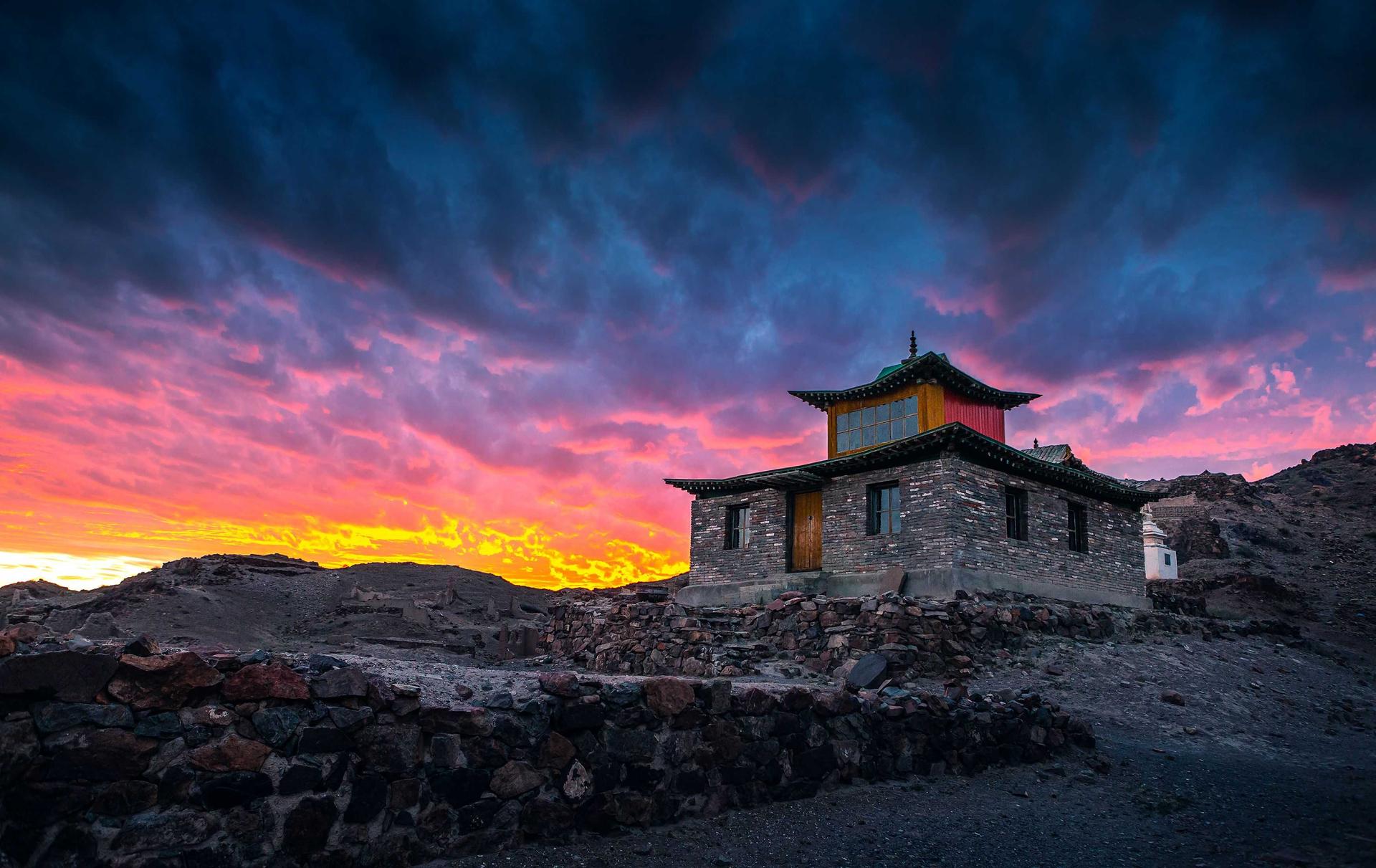
Seven kilometers north of the Flaming Cliffs, a large area of the Gobi Desert is covered by a tree grove. This native tree is found solely in the desert of Central Asia. Then, you traverse slate mountains, followed by 80 km of Ongi steppes towards Ongi Monastery. Ongi Monastery was among the seven largest monasteries in Mongolia. Two distinct monasteries, comprising over 30 temples on the northern and southern banks of the Ongi River, were encircled by the mountains of the Gobi Desert; the monastery was demolished by socialists in the 1930s. Currently, the remnants of the monasteries span a vast region. Explore a newly active temple and a ger museum, investigate the monastery remains, and ascend a nearby mountain for panoramic views of the surrounding regions.
Day 7: Orkhon Valley National Park and Ulaantsutgalan Waterfall
Day 7: Orkhon Valley National Park and Ulaantsutgalan Waterfall
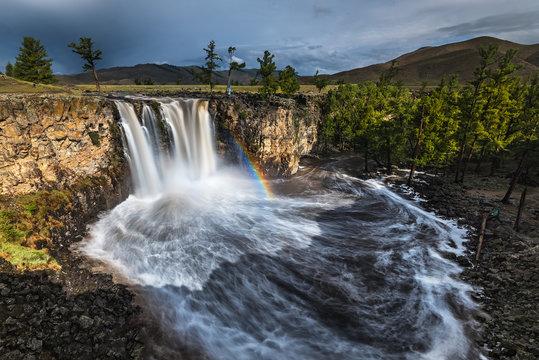
Our adventure unfolds in the transition area between the Gobi Desert and the mountain steppes, moving towards Ulaantsutgalan waterfall. Ulaantsutgalan is the largest waterfall in central Mongolia, cascading from 24 tall lava cliffs. Reach the Orkhon River in the late afternoon. Dedicate the remainder of the day to visiting Ulaantsutgalan waterfall and trekking through the Orkhon River canyons
Day 8: Trekking to Tovhon Monastery
Day 8: Trekking to Tovhon Monastery
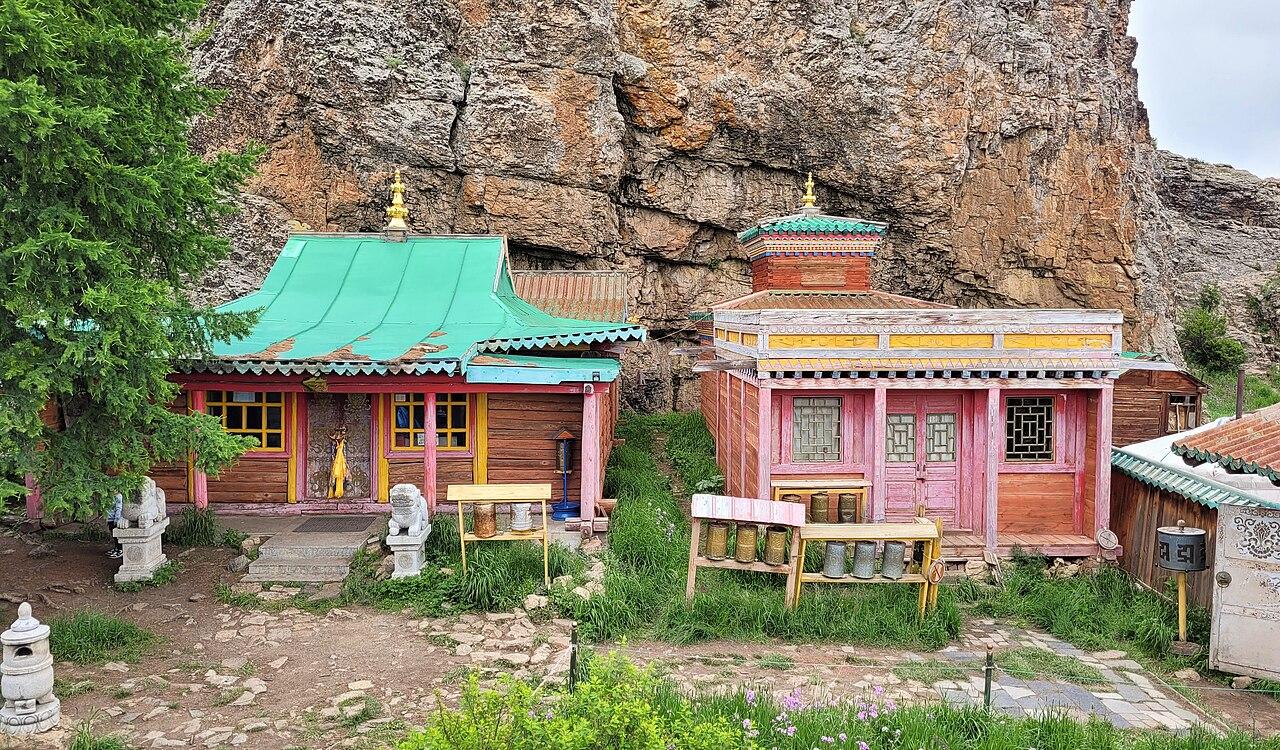
You will dedicate the day to discovering the Orkhon River Valley and trekking to Tovhon Monastery. This petite monastery was constructed on the rocky summit of Shiveet Ulaan Mountain at 2312 m. Getting to the monastery will take 3 hours of gentle hiking up and down the mountain, but not steep. The view is breathtaking from the peak
Day 9: Arkhangai province, discover the nomadic lifestyle and sample traditional Mongolian barbecue.
Day 9: Arkhangai province, discover the nomadic lifestyle and sample traditional Mongolian barbecue.
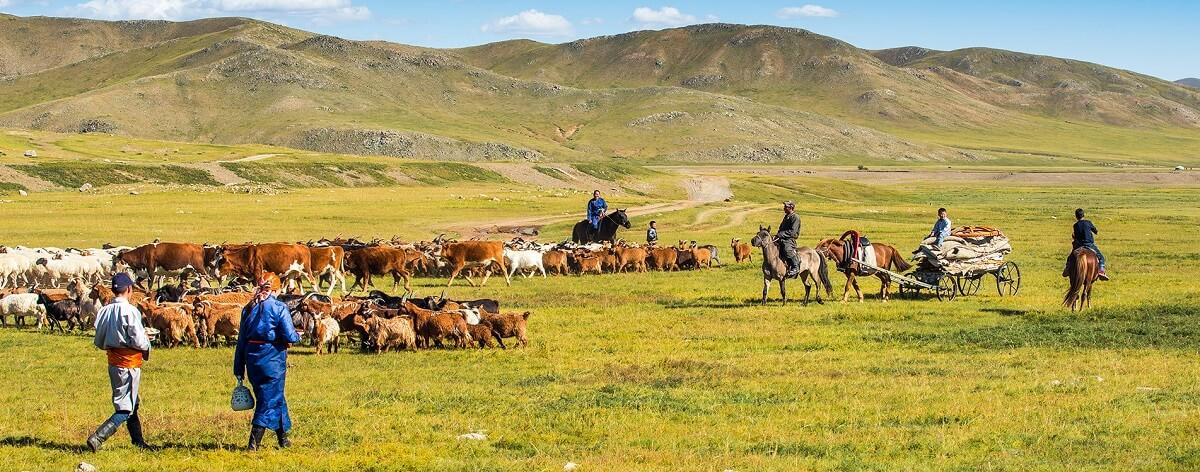
The day starts with a brief tour of Tsetserleg, the town in Arkhangai province, featuring a visit to the local market. Proceed on the path to encounter a yak-herding nomadic family and enjoy a genuine Mongolian barbecue for lunch. Learn more about the customary nomadic lifestyle of northern Mongolian herders. Then, travel through the scenic views of Arkhangai, taking a break at the Chuluut River gorge. Reach Khorgo Terkhiin Tsagaan National Park by late afternoon
Day 10: Discover Khorgo Terkhiin Tsagaan National Park
Day 10: Discover Khorgo Terkhiin Tsagaan National Park
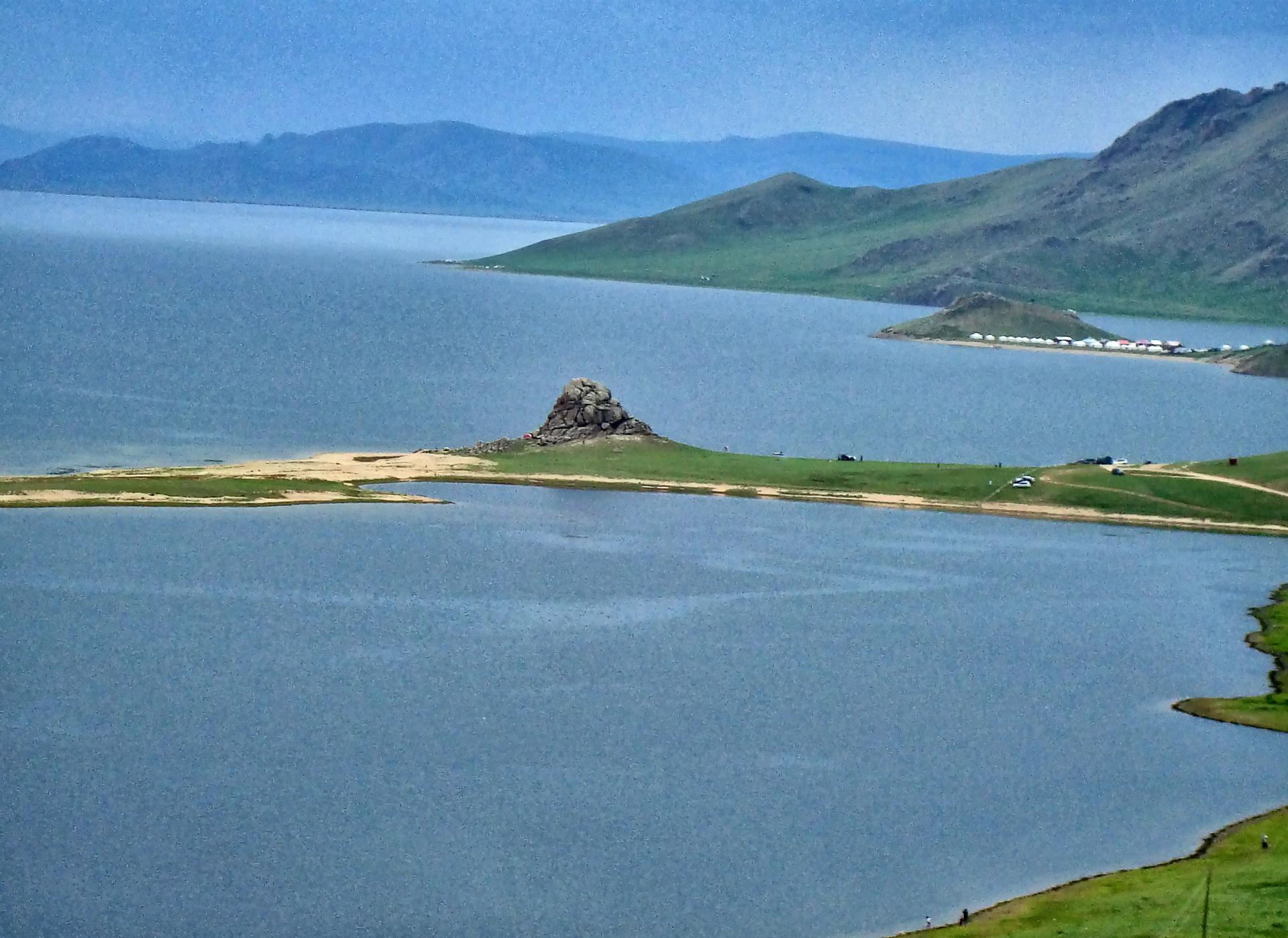
The Khorgo Terkhiin Tsagaan National Park was created to conserve the stunning mountain landscapes and the threatened species of its plants and animals. Numerous extinct volcanoes exist within the region of the National Park. Khorgo Volcano is the most impressive and easily reachable. Incredibly stunning, the pristine waters of Terkhiin Tsagaan (referred to as Great White Lake) were created when lava flows from volcanoes obstructed water access from the Terkh River to the north and south. The lake is famous for its fish and avian life, including the Ruddy Shellduck and Great Cormorant. Today, you ascend the Khorgo Volcano, which has been dormant for almost 8000 years. The nearby region features numerous caves and secluded spots. That is the reason the volcano is called “Khorgo,” which translates to shelter. Khorgo is the youngest and most accessible extinct volcano in the area, though it is not the only one. You will observe dense basalt covering a large portion of the National Park's area. Ascend the volcano using stairs and trails, and upon arrival at the summit, stroll along the volcano's edge with spectacular views of the nearby regions; a quaint village is visible from the volcano, along with an aerial view of Terhkiin Tsagaan Lake. In the afternoon, journey to the freshwater Lake Terkhiin Tsagaan.
Day 11: Kharkhorin and Erdenezuu Monastery located in the Orkhon Valley
Day 11: Kharkhorin and Erdenezuu Monastery located in the Orkhon Valley
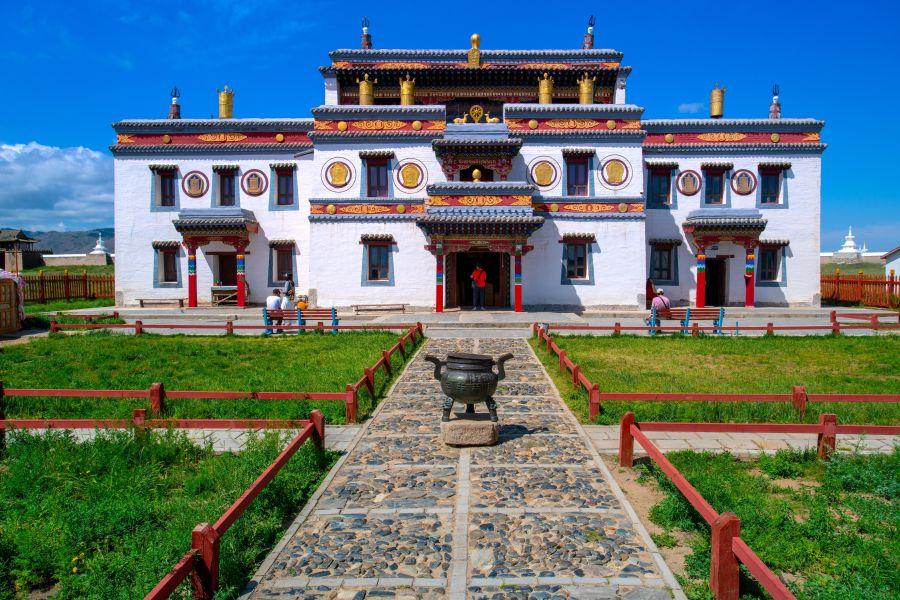
Kharkhorin, previously called Karakorum, served as the capital of Genghis Khaan's Great Mongol Empire during the 13th century. Following the relocation of the Mongolian capital to Beijing and the collapse of the Empire, Karakorum was deserted and subsequently demolished in 1388. Presently, in the expansive valley of the Orkhon River, the remarkable ancient monastery Erdenezuu exists alongside the town of Kharkhorin. Explore noteworthy religious artifacts at the monastery museum and admire its beautiful architecture, then proceed to the Kharakhorum Museum
Day 12: Meet nomads, ride horses, and head back to Ulaanbaatar.
Day 12: Meet nomads, ride horses, and head back to Ulaanbaatar.
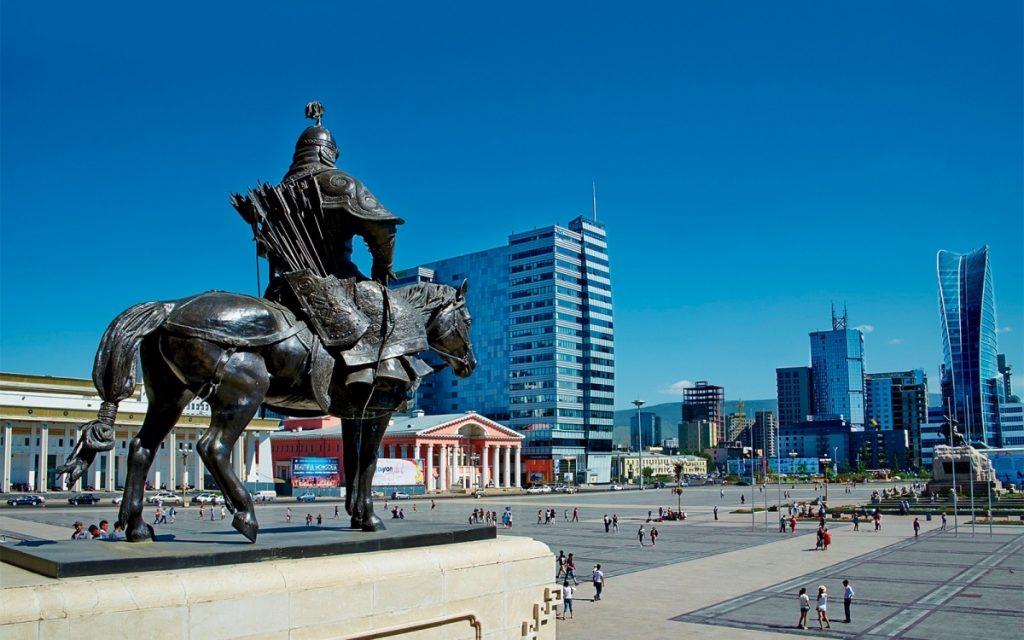
Today marks the final day you will be in the stunning countryside of Mongolia. While heading to Ulaanbaatar, stop by a nomadic family that herds horses and take a ride on them. You also have lunch with the nomads. Reach Ulaanbaatar and proceed to your lodging
Backgrounds
Does this travel plan work for you?
This is a typical journey to discover the most thrilling sights and picturesque locations of the stunning and distinct Gobi Desert, the central hilly steppes of Mongolia, and the southern region of the forested and mountainous northern Mongolia. This schedule consists of 1.5 to 3 hours of gentle hiking each day for 5 to 6 days. Journeying in Mongolia often involves extensive driving amid shifting landscapes, picturesque vistas, and vast steppes. Although we attempted to organize the journey to minimize driving. A typical day of driving will take around 3-6 hours. Day 2 features the longest drive, lasting around 7.5 to 8.5 hours, with a lunch break included. You will arrive in the Gobi Desert by the evening of the first day. The schedule features an hour of camel riding along with 1-2 hours of horseback riding, assisted by your guide and local riders. The toughest experience might be ascending tall sand dunes in the Gobi Desert, though it's not required. You can appreciate the sand dunes and have fun while ascending one of the smaller sand hills. Dishes Meals during the tour are provided as specified in the itinerary. In rural areas, ger camps offer a mix of European and Mongolian cuisine. Meat serves as the primary component for dishes and is offered at lunch and dinner alongside vegetables, salads, and soups. Traditional Mongolian meals will contain more meat. A common breakfast includes tea or coffee, bread, butter, jam, eggs, and sausage. At certain ger camps, breakfast includes cookies, cheese, cereals, pancakes, and additional options. For lunch, offerings consist of salads, Mongolian soups, a main dish (pasta, rice, vegetables, beef/mutton/chicken/fish near lakes/rivers), dessert, and tea. Ger camps offer salads, a main dish, dessert, and tea for dinner. You will sample genuine Mongolian dishes with nomads. In Mongolian tradition, it is uncommon to serve various types of meals at the same time. If you follow a vegetarian diet or have other dietary limitations, kindly let us know beforehand, and we will adjust our preparations accordingly. We will provide two bottles of water, each 0.5L, daily. A request can be made for one large bottle (1.5 liters) of water instead of two small bottles. Additional details about Mongolian cuisine Lodging Mongolian tourism is heavily influenced by the season and seasonal lodging ger camps. The ger camps are open from 15 May to 20 September. The itinerary features 1 night at a centrally situated hotel in Ulaanbaatar and 10 nights in standard gers of tent camps. Additional specifics regarding Ger camps in Mongolia
Directives Most of our company's guides speak English. Guides who speak German, French, Spanish, Russian, Chinese, and Japanese can be provided upon request. Every one of our guides is approachable and supportive. Most of them were born and grew up in rural Mongolia. Consequently, they possess a strong understanding of all facets of Mongolia. Local equestrians will assist you while riding horses and camels.
Conveyance In terms of land transport, dedicated Japanese vans and jeeps are utilized based on the size of the group. In addition to the vehicles, our skilled, approachable, and informed mechanic drivers significantly enhance your safe and enjoyable trip. You can find the travel vehicle information at Mongolia transportation
Book this tour
You may also like
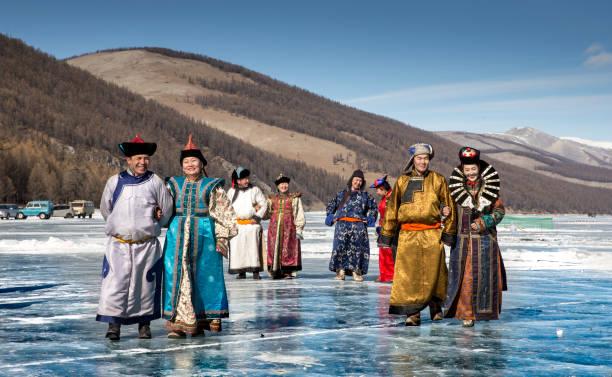
- 1 to 15 PAX
- 9 nights/10days
- Moderate
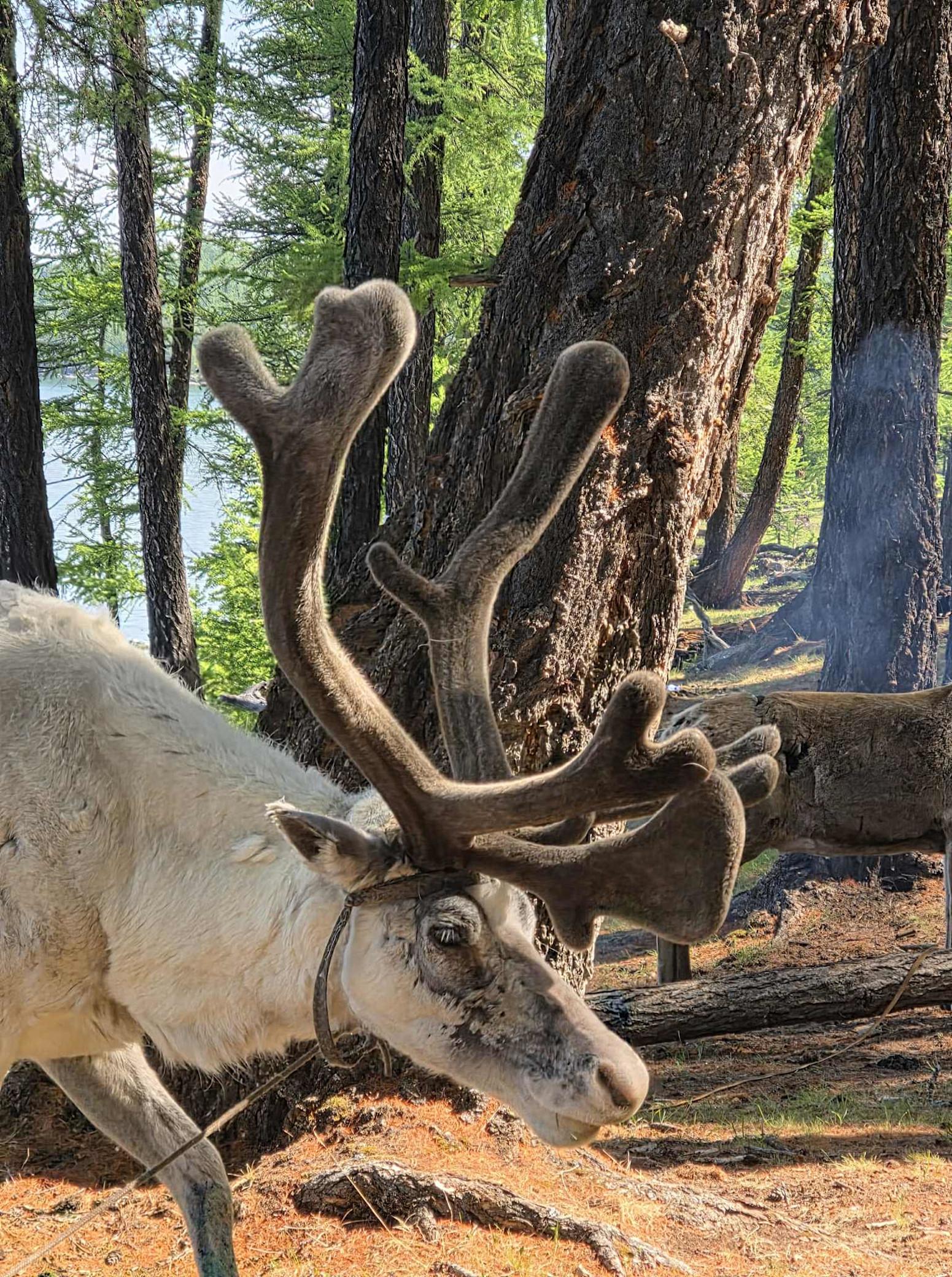
- 1 to 15 PAX
- 9 days/8 nights
- Moderate
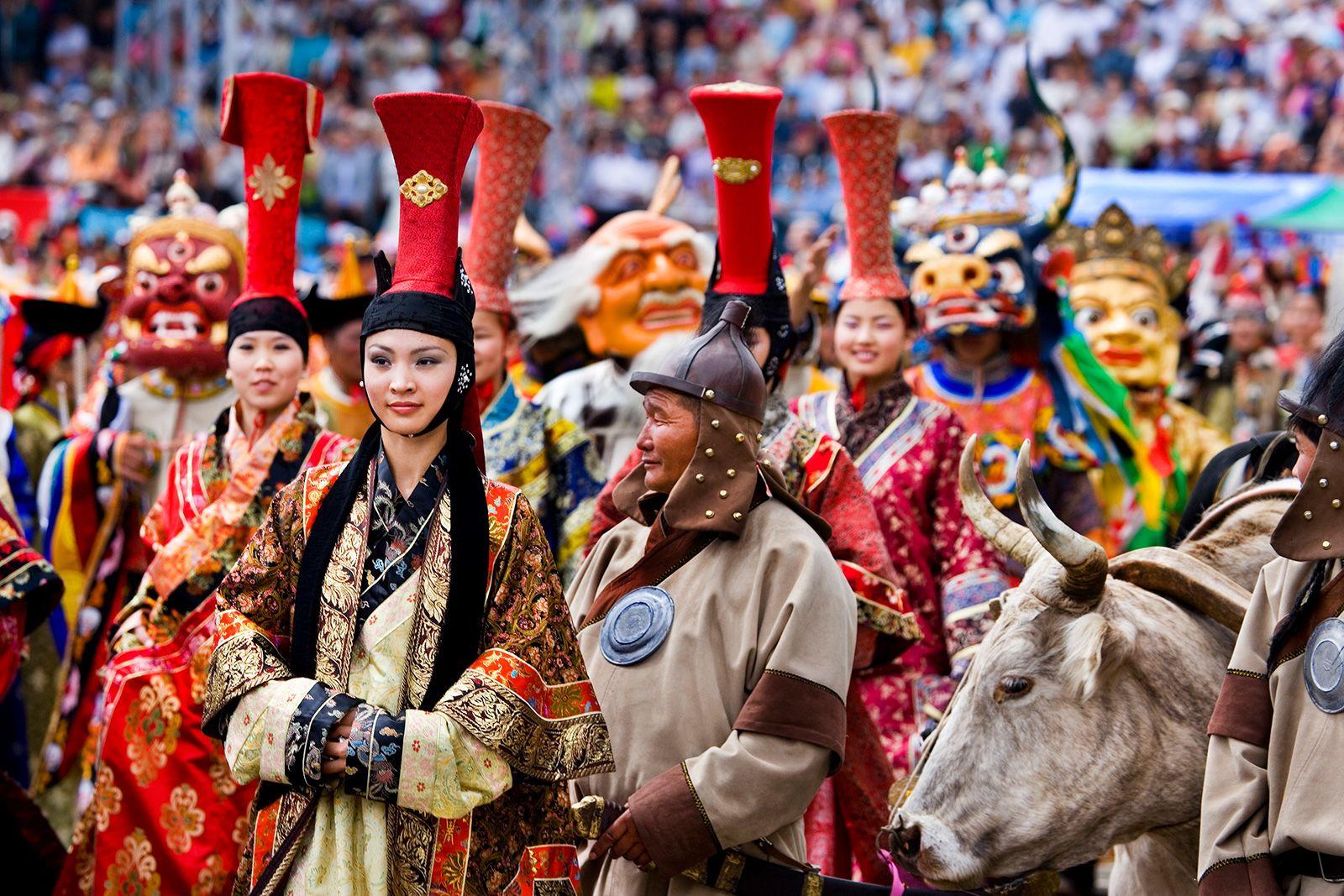
- 1 to 15 PAX
- 15 nights/16 days
- Moderate
Our Customers' Experience
We cherish the wonderful memories of our customers, as each story inspires us to improve and create even better experiences for everyone.
